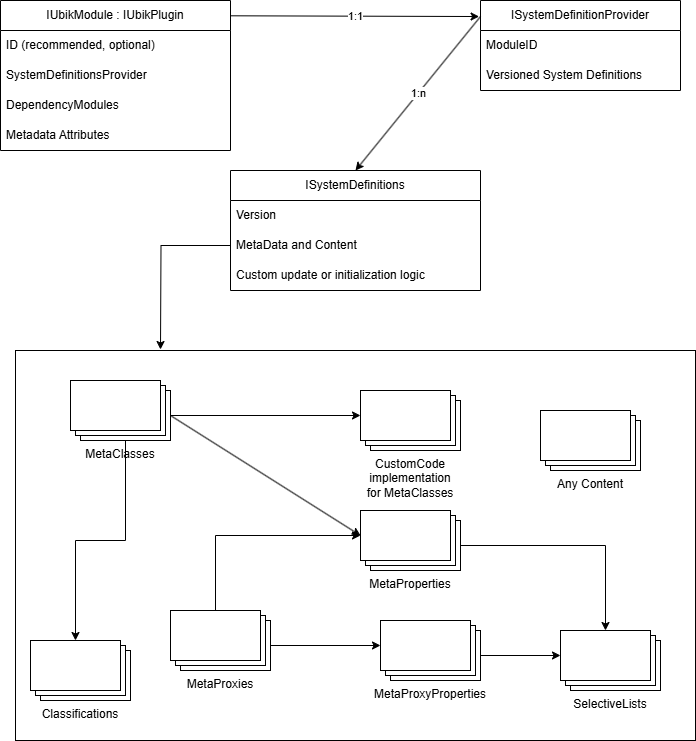Difference between revisions of "HowTo:Provide system definitions with a custom plugin"
m |
m (→Prerequisites) |
||
| Line 13: | Line 13: | ||
== Prerequisites == | == Prerequisites == | ||
| − | To understand the code, knowledge about the {{UBIK}} ER-model is required. | + | To understand the code, knowledge about the {{UBIK}} ER-model and the plugin injection mechanism is required. |
| + | |||
| + | [[Category:How-To|Provide system definitions with a custom plugin]] | ||
| + | [[Category:Module|Provide system definitions with a custom plugin]] | ||
== Instructions == | == Instructions == | ||
Revision as of 15:12, 25 November 2024
This tutorial explains how to provide any kind of preconfigured UBIK® data (system definitions) using a custom plugin.
General concept
When rolling out a UBIK® customizing into a (productive) environment, there is always the challenge regarding the transportation of the data model and basic data. The sustainable solution is to deliver versioned packages of system definitions in plugins, because that allows for easy deployment and upgrade, and for the direct application of state-of-the-art software development strategies for plugin development.
UBIK® plugins are detected when an Environment is initialized, and the user is prompted with a database upgrade if necessary. The technical maintenance of the database is automatic and allows for arbitrary adaptations. The plugin developer can decide whether to make meta definitions immutable or further customizable by the user. Custom scripts can be executed everytime the Environment is connected or just during an upgrade.
Prerequisites
To understand the code, knowledge about the UBIK® ER-model and the plugin injection mechanism is required.

